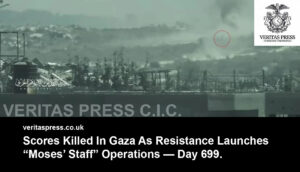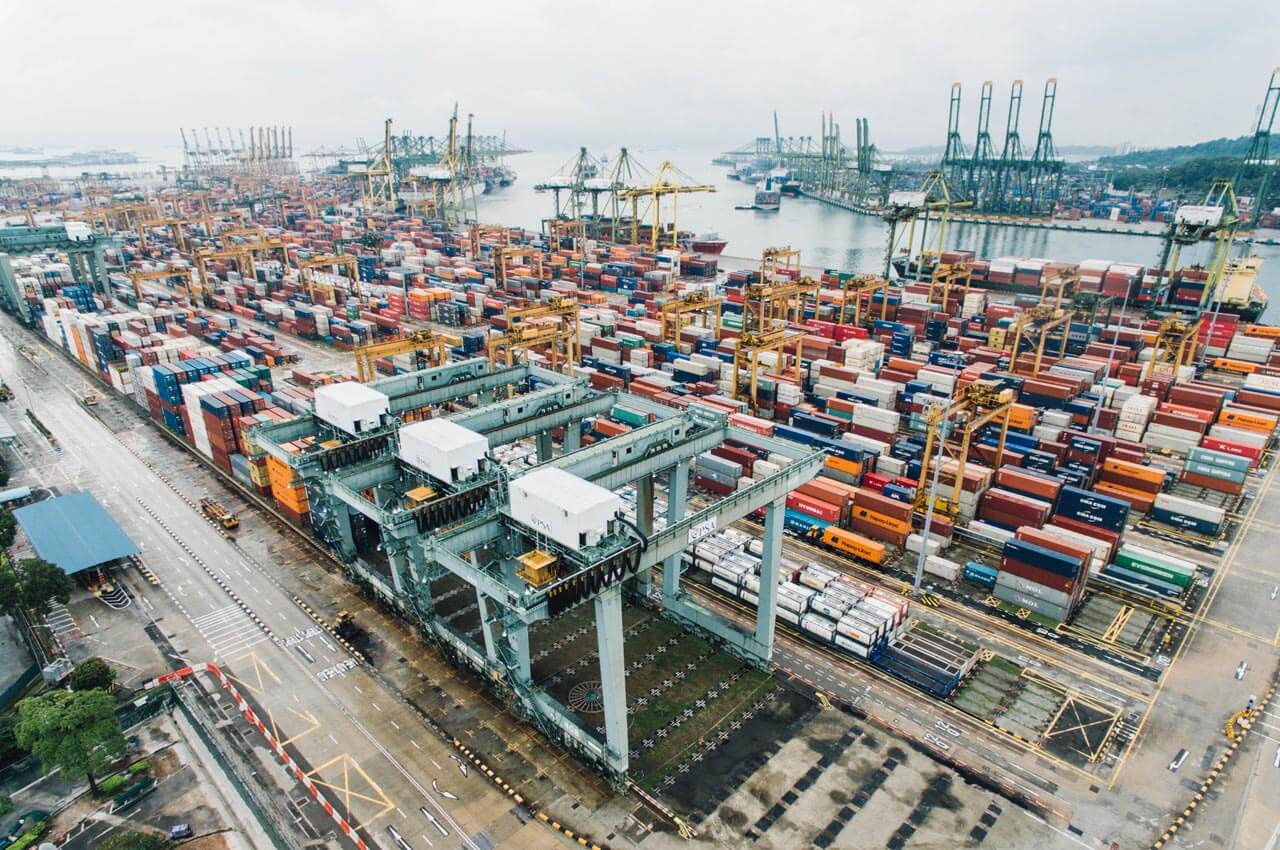Press Release: Veritas Press C.I.C.
Author: Kamran Faqir
Article Date Published: 04 Sept 2025 at 16:57 GMT
Category: Middle East | Yemen | US-Israel At War
Source(s): Veritas Press C.I.C. | Multi News Agencies
The Third Strike in 24 Hours:
For the third time in less than 24 hours, Yemen’s Ansarallah movement fired a Zulfiqar ballistic missile toward Ben Gurion Airport near Tel Aviv, shaking Israel’s sense of security and forcing a suspension of airport operations. Yahya Saree, the Houthis’ military spokesman, claimed that Israeli and American defence systems failed to intercept the missile, describing it as a “qualitative operation” that sent “millions of settlers fleeing to shelters.”
The Israeli military immediately disputed the claim, insisting the missile fell in an “open area” outside Israel. Yet civilian flight disruptions, emergency sirens, and footage of panicked evacuations tell a more complicated story, one in which official denials collide with visible disruptions on the ground.
Israel’s Air Defence: A Myth of Invulnerability?
Israel’s reputation rests heavily on its multilayered air-defence umbrella, the Iron Dome for rockets, David’s Sling for mid-range threats, and Arrow for ballistic missiles. Backed by U.S. Patriot and Aegis systems, this network has long been presented as impenetrable.
But the Yemeni strikes expose fault lines:
- Ballistic Trajectory Blind Spots: Zulfiqar missiles travel at high speeds and steep trajectories, often slipping past systems calibrated for slower or shorter-range rockets.
- Saturation Attacks: The Houthis are not firing in isolation. They are combining ballistic missiles, drones, and naval projectiles, overwhelming interceptors and forcing Israel to make impossible choices about which threats to prioritise.
- Intelligence Failures: Israeli media have repeatedly acknowledged the state’s difficulty in gathering actionable intelligence inside Yemen. Without precise launch detection, interceptors are deployed late, or not at all.
In this sense, the Ben Gurion strike is more than symbolic. It is an operational embarrassment for Israel’s defence establishment and its U.S. backers, who have poured billions into layered missile defences. The Houthis are showing that with relatively cheap systems, they can impose strategic and psychological costs on one of the world’s most militarised states.
The Escalatory Trigger: Assassinations in Sanaa.
The timing of the strikes is no coincidence. On August 28, Israel bombed the Yemeni capital, killing Prime Minister Ahmed al-Rahwi and nearly his entire cabinet. Ansarallah vowed a “harsh response,” framing the attacks on Ben Gurion and Haifa as the opening salvos of a new phase.
For Israel, the assassination was meant to decapitate leadership. Instead, it may have backfired producing a flood of retaliatory strikes and demonstrating that Ansarallah’s command-and-control remains intact.
International Reactions: Condemnation, Silence, And Complicity.
Israel and the U.S.: Defensive Spin:
Israeli officials insist most incoming missiles are intercepted, while U.S. sources emphasise “coordination and joint defensive success.” But their defensive tone betrays unease: the image of invulnerability is crumbling, and with it, deterrence.
Arab And Muslim States: Cowardice Or Calculated Silence?
Ansarallah’s statements directly condemned Arab and Muslim governments that have normalised with Israel or stayed silent in the face of Gaza’s starvation. By targeting Israel’s most vital civilian infrastructure, Yemen is not only challenging Tel Aviv but also shaming regional powers into acknowledging their complicity.
Europe And The UN: Split Voices.
European governments tread a fine line, condemning “attacks on civilians” while facing domestic pressure to sanction Israel over Gaza. The UN Security Council remains paralyzed, with Western powers shielding Israel from accountability while warning against Houthi “terrorism.”
The Wider Battlefield: Red Sea And Global Shipping.
Beyond Israeli cities, the Houthis have reopened the maritime front. The UKMTO reported an incident in the Red Sea this week, where a projectile struck near a merchant vessel 178 nautical miles northwest of Hodeidah. Though not claimed officially, it fits Ansarallah’s pattern of dual strikes: pairing Israeli homeland attacks with maritime disruption.
This is a direct threat to global commerce. Insurance premiums for ships passing the Bab al-Mandeb are climbing again, and rerouting around Africa could add weeks to transit times, fuelling inflationary shocks worldwide.
Why This Matters: Strategic And Symbolic Fallout.
- Erosion of Deterrence: Every missile that reaches its target, or even forces airport closure, chips away at Israel’s aura of dominance.
- Weapon of the Weak: Yemen, one of the poorest nations in the region, is using asymmetric tools to impose real strategic costs.
- Regional Spillover: With Iranian backing and widespread regional anger over Gaza, further escalation could pull in Hezbollah, Iraqi militias, and others.
- Civilian Infrastructure in the Crosshairs: Targeting Ben Gurion is not only military, it strikes at Israel’s economic lifeline, raising the stakes beyond battlefield calculations.
The Cracks Are Showing:
The Ben Gurion strikes are not isolated provocations; they are part of a calibrated campaign to demonstrate that Israel can be reached, disrupted, and embarrassed. The fact that Israel insists missiles landed “outside” while simultaneously shutting down its main airport suggests a deeper truth: its defensive shield is not airtight.
Meanwhile, Western silence on the assassination of Yemen’s prime minister and Arab and Muslim nations complicity in the Gaza siege highlight the selective morality of the so-called international community. Yemen’s message is clear: if Gaza starves, Tel Aviv will not live in peace.
What Comes Next:
- Israeli Retaliation: Likely more airstrikes in Sanaa and Hodeidah, risking mass civilian casualties.
- Yemeni Escalation: More ballistic strikes on airports, ports, and shipping, perhaps even coordinated with Hezbollah or other allies.
- Maritime Crisis: A Red Sea escalation could cripple global supply chains, forcing U.S., EU, and Gulf powers to intervene more aggressively.
The war has entered a dangerous new phase, one where Israel’s myths of absolute security are being pierced from unexpected directions.
In Summary: Accountability Amid Strategic Failure.
The missile strike on Ben Gurion Airport is more than a tactical incident, it is a symptom of systemic failure. Israel’s vaunted air-defence apparatus, backed by billions in U.S. technology and funding, was tested and, at least partially, circumvented. Whether the missile landed inside Israel or slightly beyond, the disruption to civilian operations, the chaos in shelters, and the suspension of flights reveal an uncomfortable truth: the state’s intelligence, targeting, and interception capabilities are not infallible. These are not isolated oversights, they are exposures with geopolitical consequences, amplified by the Houthis’ deliberate use of saturation strikes and asymmetric methods.
Accountability is glaringly absent. Israeli authorities frame events in a narrative of “successful interception,” yet civilians and independent reporting tell a different story. On the other side, Yemen’s retaliatory campaign is cast as terrorism by Western powers, while Israel’s assassination of Yemen’s prime minister and ministers, conducted under the guise of pre-emptive security, receives little international scrutiny. This double standard exposes a profound gap in global accountability: military aggression against political leadership and civilian infrastructure is normalised when wielded by states, but condemned when exercised by non-state actors, even when responding to illegal strikes and occupation policies.
The intelligence failures revealed by this episode extend beyond Israel. Repeated difficulties in tracking Houthi launch sites and predicting missile trajectories show limits in satellite surveillance, human intelligence, and regional reconnaissance, even for a state renowned for its military sophistication. These gaps invite not only operational failure but also strategic miscalculation, heightening the risk of escalation that could engulf the Red Sea corridor, Gaza, and broader Middle East trade and security lines.
Finally, the strike lays bare the geopolitical fractures and hypocrisies in the region. Arab and Muslim states remain largely silent or complicit in Gaza’s ongoing siege, while Western powers defend Israel uncritically. The Houthis have exploited these fractures, projecting power beyond Yemen and shifting the calculus of deterrence. The message is unmistakable: aggression against weaker actors carries immediate consequences, and no fortress, technical, political, or symbolic, is impregnable when regional grievances converge with asymmetric capability.
In short, Ben Gurion under fire is a wake-up call: technological superiority cannot substitute for political accountability, comprehensive intelligence, or ethical consistency in state conduct. Ignoring these lessons risks repeating the cycle, where civilian populations, strategic chokepoints, and regional stability remain the unwilling victims of miscalculation and systemic impunity.
Tags:




























Leave a Reply